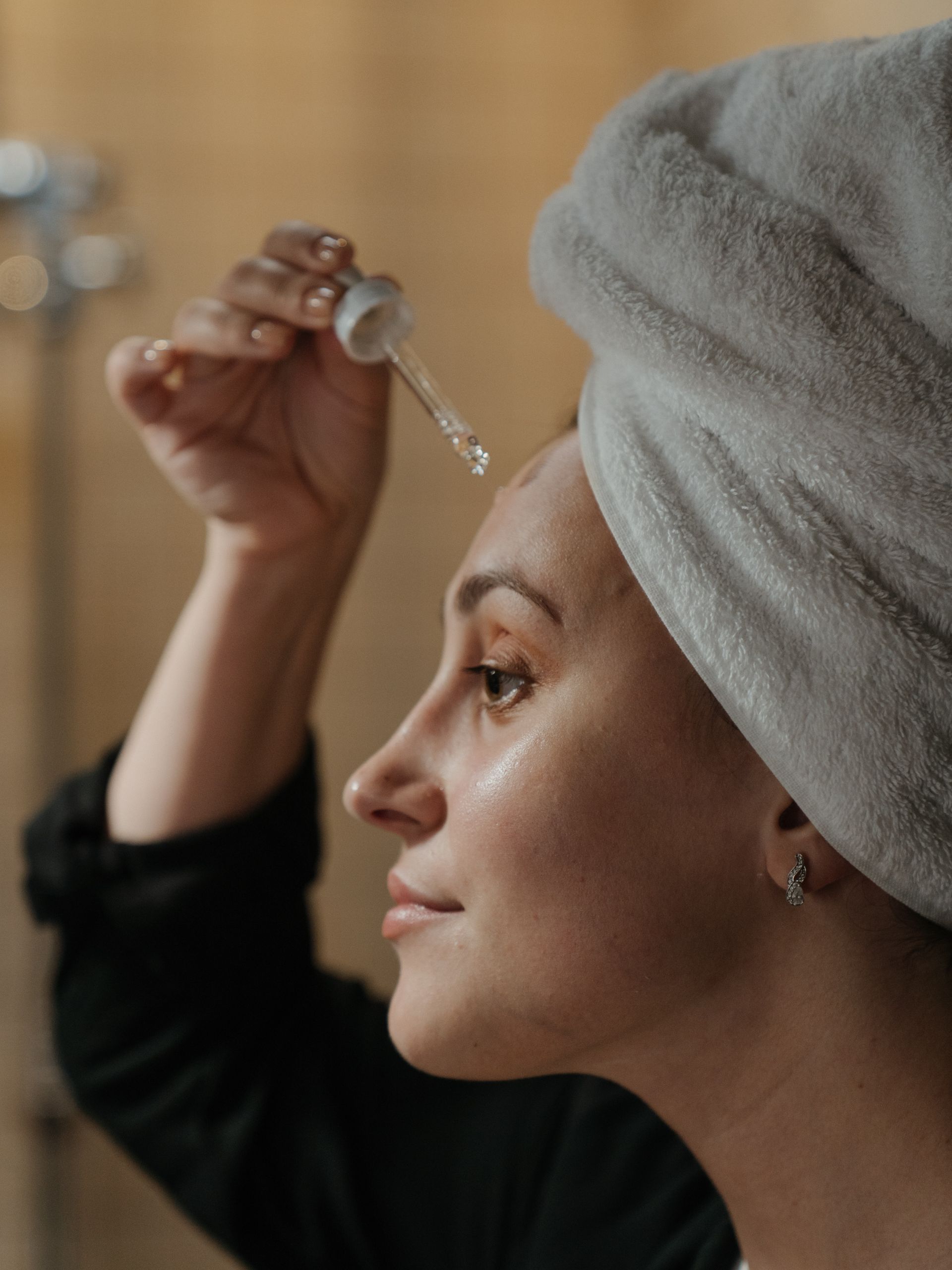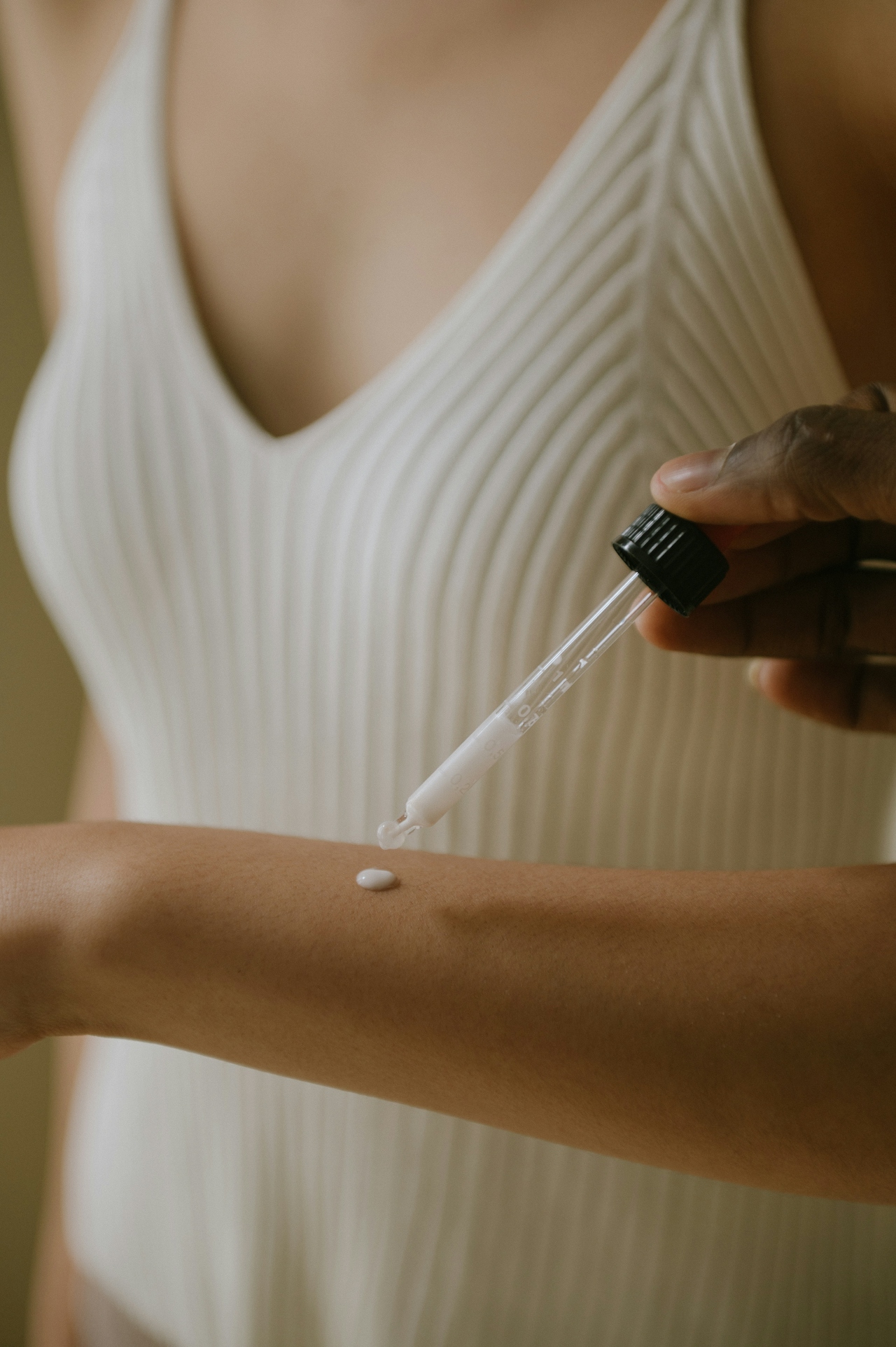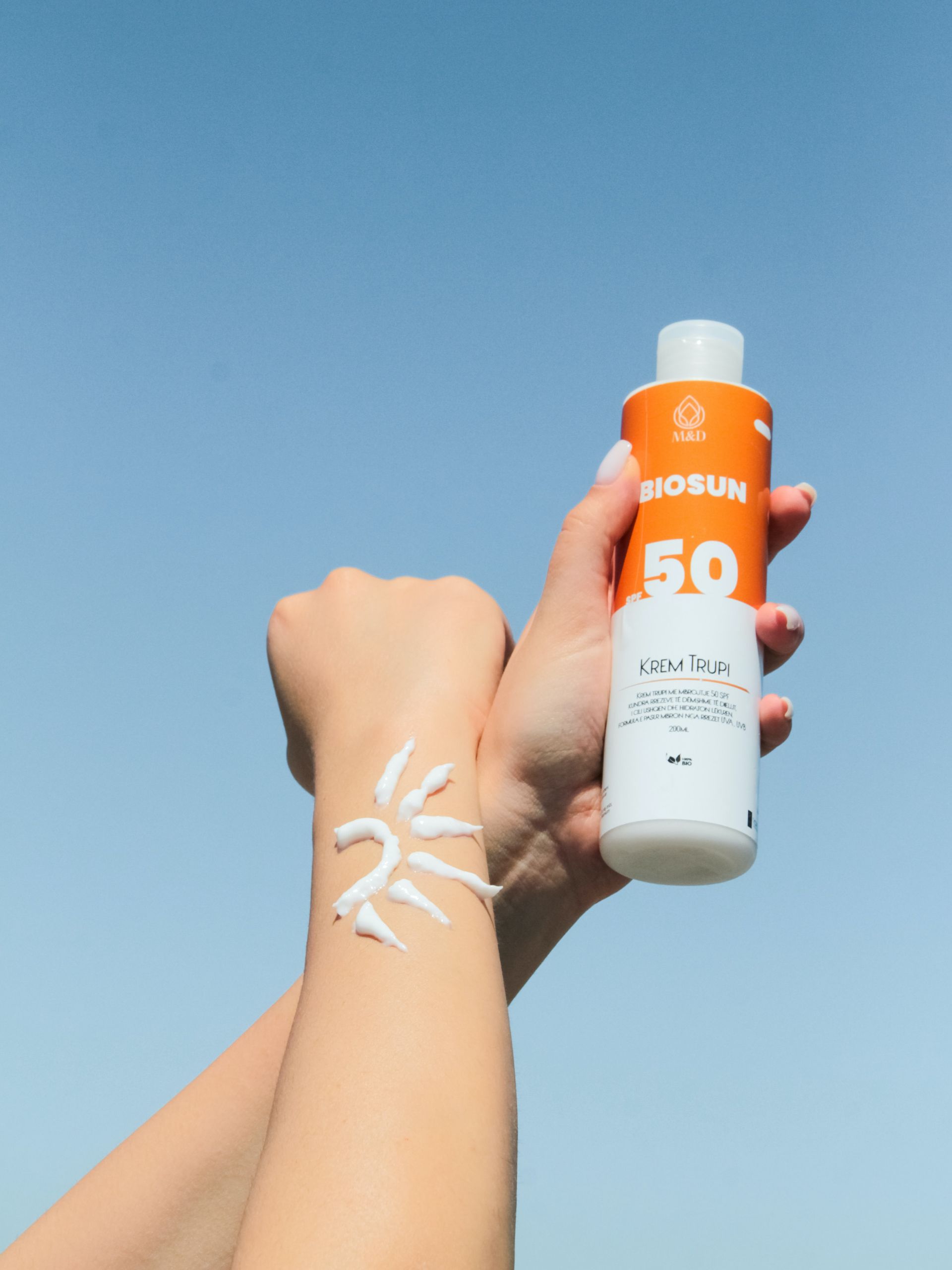- What is hyaluronic acid?
- What is glycerin?
- How do humectants support dry or dehydrated skin?
- What is the difference between glycerin and hyaluronic acid?
- Benefits of hyaluronic acid
- Benefits of glycerin
- How to incorporate each one into your skincare routine
- Can hyaluronic acid and glycerin dry out your skin?
- What not to mix with hyaluronic acid?
- The Bottom Line
What is hyaluronic acid?
Hyaluronic acid is a naturally occurring substance that’s ubiquitously found in the body. It’s a glycosaminoglycan that’s part of the connective tissue, which consists of carbohydrates known as polysaccharides.
In the skin, hyaluronic acid is the main component that gives you a plumped and hydrated look. Experts also refer to this substance as a humectant, which is a substance that retains moisture. In general, we can find hyaluronic acid in cosmetic products that use the process of biofermentation to produce the substance.
There is also a salt form called sodium hyaluronic, which is more stable and resistant to oxidation.
As we age, the skin becomes less efficient at producing certain substances, including hyaluronic acid, collagen, and elastin.
What is glycerin?
Glycerin is also a naturally occurring substance that’s sourced from vegetable oils or animal fats. It appears as a transparent, colorless, odorless, and viscous liquid with a sweet flavor.
As a humectant, glycerin draws water to the surface layer of the skin from both deeper skin levels and the surrounding air.
In skincare formulations, glycerin is commonly paired with occlusives (another kind of moisturizing agent) to help retain the moisture it attracts. A study found that glycerin is the most effective humectant to enhance hydration in the skin’s outermost layer.
On a side note, people often get confused about the differences between glycerin and glycerine. These terms might be used interchangeably. However, they have distinct differences.
Glycerin generally refers to a highly purified form that contains at least 95% glycerol, which makes it suitable for pharmaceutical and food use. In contrast, glycerine encompasses various grades, including lower purity levels, and is commonly used in industrial applications.
How do humectants support dry or dehydrated skin?
Humectants support dry or dehydrated skin through one simple mechanism – attract and retain moisture from the environment and deeper layers to the skin’s surface.
This replenishes lost moisture and gives the skin a plump, smooth, and youthful appearance. The incorporation of humectants into skincare helps combat dryness, which promotes a healthier and more radiant complexion.
Learn about the ins and outs of dry skin by clicking on this link.
What is the difference between glycerin and hyaluronic acid?
Glycerin and hyaluronic acid are both popular humectants in skincare, but they have distinct properties and mechanisms.
The table below highlights the key differences between glycerin and hyaluronic acid:
| Feature | Glycerin | Hyaluronic acid |
| Source | Derived from vegetable oils or animal fats. | Naturally occurring in skin, connective tissue, and eyes. |
| Primary function | Draws moisture from the air into the skin. | Retains moisture and provides a plumping effect. |
| Skin Tolerance | Well-tolerated by most skin types. | Naturally present in the skin (low irritation risk). |
| Hydration mechanism | Attracts moisture from the air. | Attracts and retains water in the skin. |
| Anti-aging benefits | Helps maintain hydration. | Reduces the appearance of wrinkles and fine lines. |
| Consistency | Clear, odorless, and viscous liquid. | Typically available in serums and gels. |
| Molecular size | Small (penetrates deeper into the skin). | Large (forms a protective barrier on the skin) |
| Effect duration | Long-lasting hydration. | Immediate plumping effect but hydration over time. |
| Cost | Generally inexpensive. | More expensive. |
Benefits of hyaluronic acid
Over the past few years, hyaluronic acid has gained massive popularity in the field of skincare, as it’s advertised to be the magical substance that restores your youthful-looking skin by hydrating it.
The first thing you need to consider before purchasing HA supplements is that topical forms will never be as effective as the injected forms. Therefore, if you want to reverse the aging process and improve the volume loss and laxity of the skin, you need to opt for the injectable form of HA.
As we age, our bodies become less efficient at producing hyaluronic acid and collagen. Consequently, this leads to elasticity and moisturizing problems that precipitate wrinkles and rashes.
Several beauty product brands started incorporating hyaluronic acid into their products, specifically to improve skin composition and texture.
Aside from its role as a moisturizer, hyaluronic acid appears to possess potent antioxidative properties that protect the cells from the destructive damage of oxidative stress.
Benefits of glycerin
According to the American Academy of Dermatology Association, glycerin provides the following benefits:
Hydration – Glycerin hydrates the outer layer of the skin (i.e., stratum corneum) by drawing moisture from the environment into the skin.
Improved skin barrier function – It helps strengthen the skin’s natural barrier, which is essential to retain moisture and protect against environmental stressors and irritants.
Protection against irritants – Glycerin forms a protective layer on the skin, which provides a barrier against various skin irritants and reduces the risk of irritation and inflammation.
Relief for dry skin – It is highly effective in the management of dry skin as glycerine provides deep and lasting hydration.
Psoriasis management – Glycerin may help with psoriasis and reduce flakiness.
How to incorporate each one into your skincare routine
To incorporate glycerin into your skincare routine, use moisturizers that contain glycerin after you clean your face. You can also use a glycerin-based serum before your moisturizer to boost hydration levels. For an extra moisture boost, opt for hydrating masks that include glycerin.
For hyaluronic acid, apply a hyaluronic acid serum after you cleanse and before you moisturize. This helps lock in moisture. The best hyaluronic acid for skin should be able to moisturize the skin and exert anti-aging effects. What’s more, use hyaluronic acid-infused sheet masks to provide immediate hydration and plumping effects.
Can hyaluronic acid and glycerin dry out your skin?
Although both hyaluronic acid and glycerin are effective humectants that draw moisture into the skin, they can potentially cause dryness if used incorrectly.
In extremely dry environments, these humectants may draw moisture from the deeper layers of the skin instead of the air, which precipitates dehydration. To prevent this, always follow up with an occlusive moisturizer to seal in the moisture and protect your skin from losing hydration.
What not to mix with hyaluronic acid?
Hyaluronic acid is generally well-tolerated. However, there are a few considerations to keep in mind, especially when it comes to mixing ingredients.
For starters, avoid the use of hyaluronic acid with products that contain high concentrations of alcohol, fragrance, or other potentially irritating ingredients. Additionally, it might be okay to use hyaluronic acid with exfoliating acids (e.g., alpha hydroxy acids), but it is best to avoid this combination in a single routine. High concentrations of acids can sometimes be too harsh and may cause irritation when used alongside hyaluronic acid.
Finally, try to apply vitamin C before hyaluronic acid. This helps to fortify the skin barrier and maximize the benefits of both ingredients.
The Bottom Line
- Glycerin and hyaluronic acid are both excellent choices for skin hydration.
- Use glycerin in moisturizers and masks and apply hyaluronic acid in serums and moisturizers.
- Don’t mix hyaluronic acid with harsh ingredients or strong acids.
- Apply vitamin C before hyaluronic acid.
- Use an occlusive with hyaluronic acid in dry environments.
- Both ingredients help maintain the skin’s barrier.



